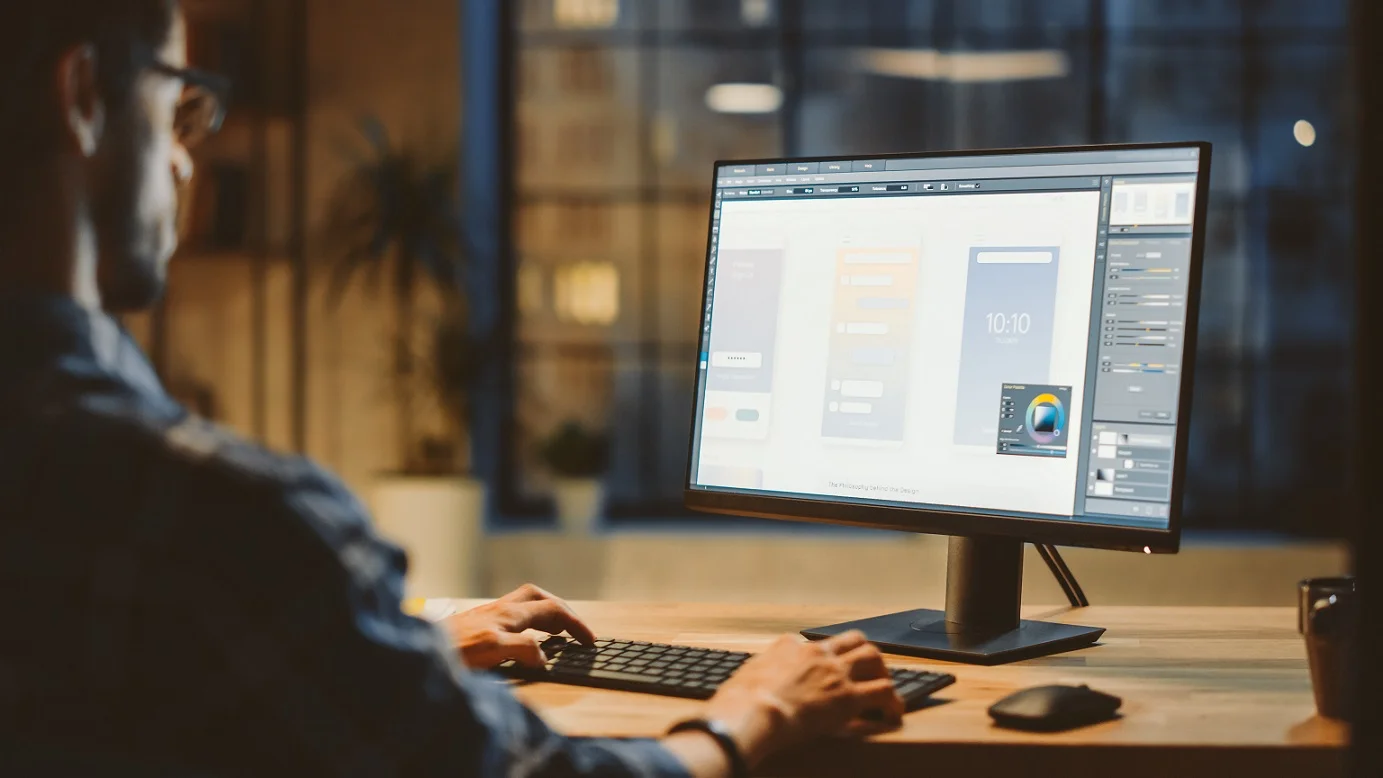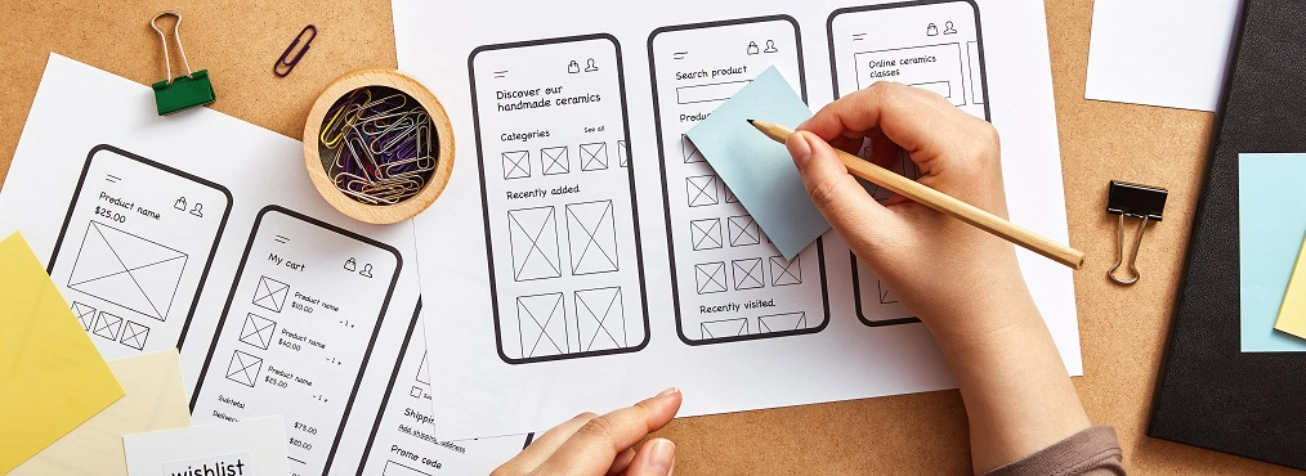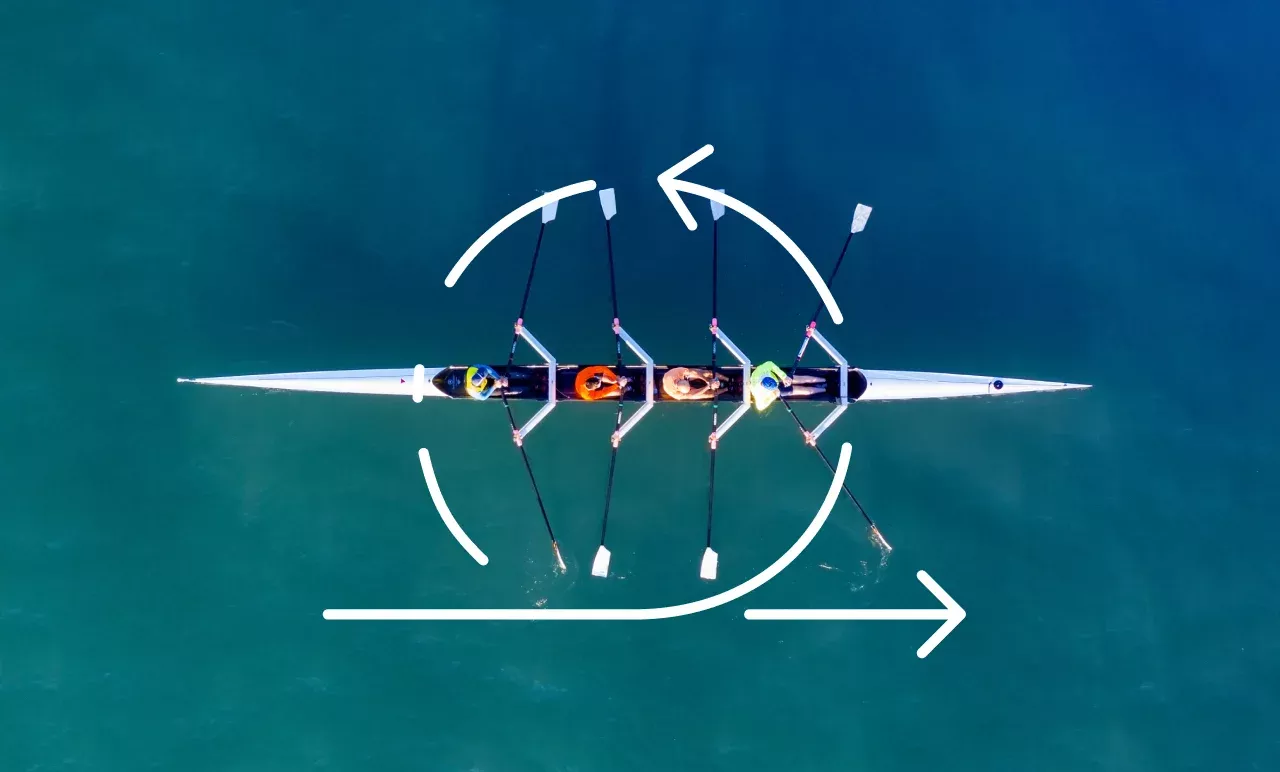The Power of Data Visualization Using Tableau
The Future of Web Design
The development of 'the Internet 'has revolutionized the future of businesses. Websites are the new ideas that embody a company virtually, illustrating its essence and providing functions to keep clients engaged and delivering services online.
Web Designing is an integral part of the overall Web Development. Looking back at the history of Websites born out of the origin of the Internet, the first batch was plain and had no interaction features. Internet in its "Web 1.0" phase was an extension of newspapers, and the Websites were basic digital newsletters.
New aspects were added with the development of the Internet "Web 2.0" phase. Newer tools were available for web designers. An overall increase in internet speed resulted in the metamorphosis of "Website Designing" The Digitization trend following the widespread use of Smartphones, laptops, and other virtual devices that feature internet services has made "Web Designing" more complex and diverse.
Currently, websites are:
The digital physique of a Brand
- An augmentation of their services
- An exhibition of their identity and vision
- A connection tool with their users
To determine the Future aspects of Website Designing, we will be talking about:
1. The Importance of Website Designs- how they impact a website’s performance.
2. How the current tech trends influence "Website Designing."
3. The probable future of Website Designing.
1. The Importance of Website Designs - How they Impact a Website's Performance
Websites exist as the digital presentation of a Brand's being. Hence, each Website needs to have a unique style that expresses a brand's ideals.
According to "The Digital Excellence Awards," 38% percent of people stop engaging with a website if they find it unattractive. The Visuals of a website need to be appealing as they express the entirety of a Brand's being within a few frame spaces. Product images or any other visual elements used in the Website should be of acceptable quality and well-sorted copyright ownership.
a. The usage of particular colours that a brand is associated with, through its logo and other expressive elements, is beneficial for the Brand's Identity. Furthermore, colours are psychologically more expressive; hence they tell the Story behind what a Brand seeks to portray.
b. Fonts and the Layout Structure of a Website also influence a Brand's Identity. For example, an easily readable Font promotes the content present on the Website to larger audiences. Similarly, a minimal layout that highlights the main elements of the Website and looks decent and organized seems to bring in more users.
c. Accessibility is another important element in website designing. The features of the Website should be easily accessible to everyone. A good Website is one that everyone can use, irrespective of differences in abilities. For example, a global brand needs to speak about its ideals in multiple languages so that users worldwide can engage with it.
The new "Inclusive Designs" trend talks about making technology accessible to all by adopting a design style operable by everyone, irrespective of any permanent or temporary disabilities. It includes using design illustrations representing all ethnicities and reshaping AI into a Non-Biased one. "Inclusive designs," if adopted while Website Designing, can increase the number of users to a great extent and upgrade the Brand's reputation.

2. How do the current technological trends influence "Website Designing?"
a. Augmented Reality and Virtual Reality - Modern technological trends like AR and VR are changing our perception of reality. AR allows us to see our everyday world differently, and VR transcends us to a new virtual reality dimension. With these emerging technologies, the UX designs are surpassing their previous forms. The experiences that these technologies introduce are unique and highly immersive. As a result, the industry is ever-expanding, and new scopes like healthcare, tourism, manufacturing, media, etc., are also included in its aspects.
Using the technologies of AR and VR, newer forms of interaction can be developed for a website. For example, tourism companies can showcase the experiences they deliver through Virtual Reality, while clothing brands can promote their products by advertising them through Augmented Reality.
Future of AR and VR UX designs
3D Space - While most of the Website design trends of the current world are 2D in nature, VR and AR work to craft a 3D version of reality. So, designers have to construct 3D interfaces.
- While designing, it is essential to consider things like comfortable VR space, motion sickness prevention, comfortable interactions, the safety of users, etc.
- Interactions are multimodal. In VR and AR, interactions with digital objects are done by moving the head, hands, fingers, and other body parts. The hardware can also monitor one's verbal and gazing abilities.
- Audio - To make the VR space more real, audio design plays a crucial role. It creates a sense of immersion in Space.
- The diversity of user physicalities should not be ignored while designing the UX of the Website.
b. Chatbots - Chatbots are automated AI programs that ensure user engagement on a website. This AI program trend has already started to flourish, and businesses are using chatbots to provide answers to their customers' queries 24/7.
Influevsive.com mentions that -"The Grand View Research states, the chatbot market would be worth $1.23 billion by 2025. According to an Oracle survey, 80% of individuals have used or plan to use an online chatbot by the end of the decade.
One can program Chatbots to communicate in a human-like manner through a text interface, and they can engage a user by giving the required information. Chatbots are used in diverse types of Websites as they are easy to use and very functional.
In the Future, Chatbots are more likely to be smarter due to machine learning algorithms; for example, they can serve as personal assistants while using e-commerce websites.
c. Voice Interfaces - Voice UI gained popularity in recent years with virtual assistants like Siri and Alexa. Voice User Interface brings out a new series of UX designs, which works well even without a digital interface. This UI design has eliminated the requirement of a visual device for displaying information; instead, we have seen how non-visual interfaces like "Amazon's- Alexa" "Google's- Echo" and other similar products gained a popular demand among the users.
Talking seems to be the most natural of human interactions, and hence with VUI, talking with virtual assistants in devices enhances the user experience to a different level. This technology also impacts the lives of people who are physically impaired.
There is a potential inclusion of Voice Interface in the future of Web Designs. Voice Interface is an easy and convenient mode of interaction, and about "71% of users prefer doing a voice search in queries instead of typing."- Userguiding.com
Voice UI helps the website stand out and provides a unique user experience that is more human-like. It also offers hands-free commands ensuring better multitasking experiences, and includes visually impaired users to avail the website's services.
However, better and more engaging scripts, better speech analysing functions, user privacy, etc., need to be considered for a more appealing UX.
3. The Probable Future of Web Designing
The current trends in Web design determine its upcoming future. Presently Web Designing is a flourishing field, and it comprises UX and UI designers that look to make Websites more appealing and easily operable. It is a space that mingles elaborative coding knowledge with artistic and creative insight.
Basis the U.S Bureau of Labor Statistics report, the job outlook for web designers will increase by 8% through 2029, and 14,000 new web designing jobs will increase every year through 2029.
The new technologies that have been surfacing in recent years modify the aspects of Web Designing accordingly. More contemporary and more innovative developer tools are eradicating complex functionalities while designing a website, making designing more convenient. From debugging a code to increasing its accuracy, these new developer tools are shifting the approach of Web design into a more advanced form.
With the adaptation of Data - analysis services, companies have now switched to designing websites based on user demands. A good understanding of the metrics can highlight to a designer the areas they need to optimize and the spaces they need to work on to get a lesser bounce rate and more traffic. Coordination between Data Analysts and Web Designers increases the potentiality of a website’s success. Further usage of AI-enabled Data Analysis promises custom Web designing by learning a user's choices.
The new trend of pageless websites is also gaining users' attention due to its seamless user interface and intriguing structure. The interface of pageless websites is adaptive on mobile devices, making it an efficient and fluid interface. All the essential information is displayed on the screen in a story-like format which increases user engagement and focus. A low-cost margin is another reason why pageless websites are gaining prominence.

Websites are getting smarter with time. Features like Layout adaptation based on device resolution, easy language conversation, location-based website modifications, and personalized user experiences have shaped the present-day Websites into a more modern and futuristic manner. In addition, web designers can adapt more features with upcoming advances in technology.
The aspects of Web Designing alter as newer ideas and tools emerge. The Future of Web Designing is directly associated with the Future of the Internet, which is blooming due to exposure to more unique ideas. Concepts like "The Metaverse," "IOTs," and the like strive to change the future of the Internet. Web Designing, which is already in a good stature, holds tremendous potential in the future.
Are you on your digital transformation journey? Want to revamp your website with modern technological tools and trends?
Email us or Talk to us at +91-98367-81929 or Simply Contact Us through the website.
Let's Connect











